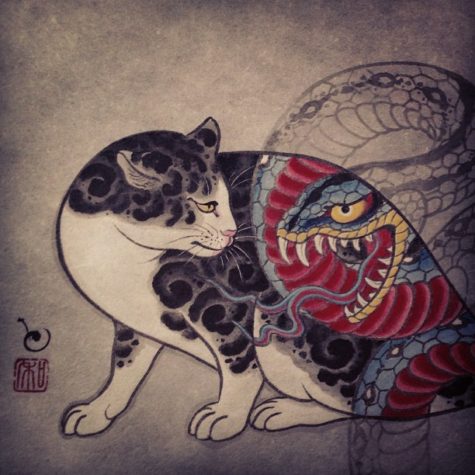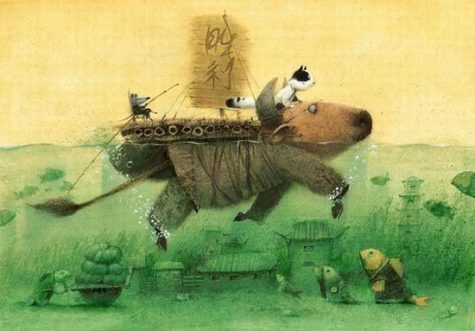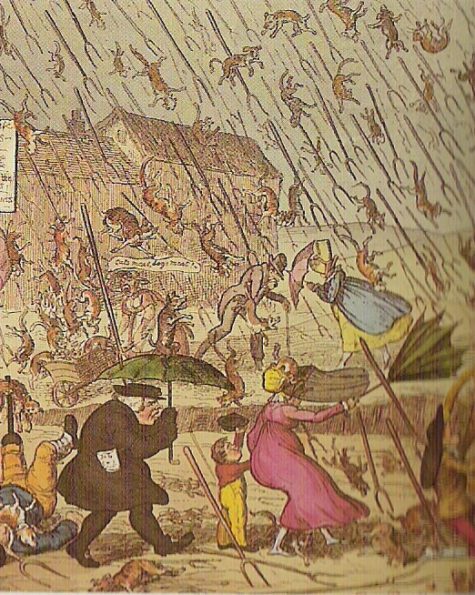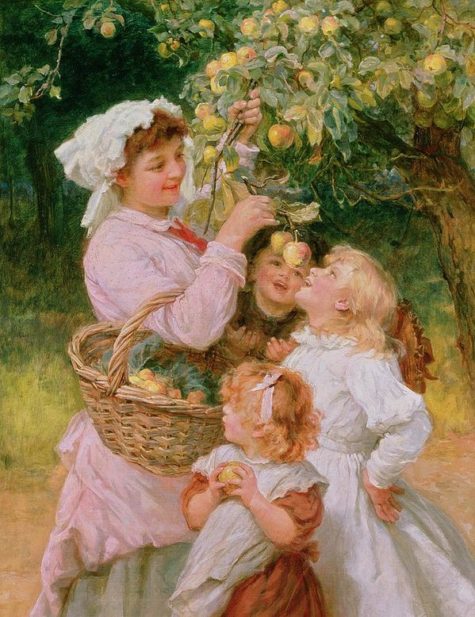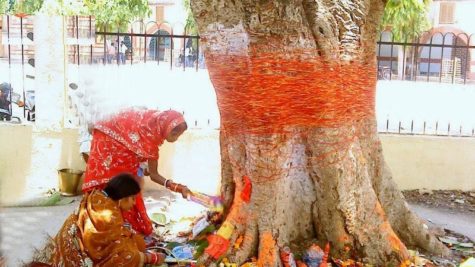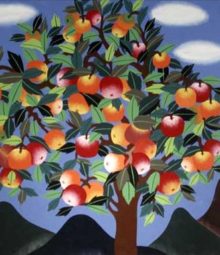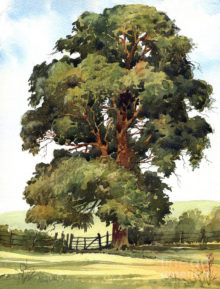Cat Symbolism and Lore
Even the most common household cat has a mystique about it and the potential for the supernatural powers that man has ascribed to cats for thousands of years.
At various times, and in different places, it has been regarded as a holy or a diabolical beast, as a bringer of good fortune or as an omen of evil. In antiquity it was sacred to more than one divinity.
Artemis / Diana, the Goddess of the Hunt was associated with the cat, also notorious for its hunting skills. The followers of Diana revered cats because they were under her special protection, and because she once assumed that form. So too, in pagan Scandinavia, Freya, the goddess of love and fertility, was associated with them, her chariot was drawn by them.
Typically, in Western civilizations, the cat (particularly if it is black) belongs to the witch; it is her familiar, her companion and her alter ego. As such, the cat shares magickal secrets and arcane knowledge which, of course, she cannot explain to mere mortals, since they don’t speak her language. There is an unspoken communication between the witch and her grimalkin that transcends any language used by other creatures.
In the Saga or Eric the Red, there is a very complete description of a witch or prophetess that was a mistress of rune-craft, the art of reading the runes. Part of the description of her costume includes a hood “lined with white cat skin” and “cat-skin mittens.”
When it sleeps, the cat curls itself into a circle with its head touching its tail, making a shape that is very similar to the ouroboros. Like this ancient mythical creature, the cat is a symbol of immortality.
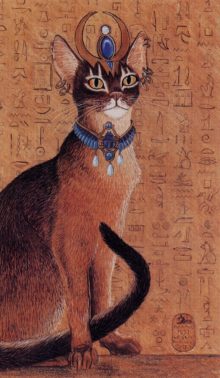 The Ancient Egyptians regarded the cat so highly that they revered it as a deity. The Egyptian Bast, or Pasht, was cat-headed and attended by cats, and consequently every member of the cat family was loved and venerated in ancient Egypt. To kill one was sacrilege. When a household pet died, its owner shaved off his eyebrows as a token of mourning and performed funeral rites for it.
The Ancient Egyptians regarded the cat so highly that they revered it as a deity. The Egyptian Bast, or Pasht, was cat-headed and attended by cats, and consequently every member of the cat family was loved and venerated in ancient Egypt. To kill one was sacrilege. When a household pet died, its owner shaved off his eyebrows as a token of mourning and performed funeral rites for it.
Bast was the cat goddess, and mortal cats whose fur was of three different colors, or who had eyes of different shades were honored in particular for their Bast-like appearance; it is not just the black cat that holds power. Bast is often depicted with a knife in her paw, having beheaded Apophis, the enemy of the Sun.
Egyptian priests believed that cats carried the magnetic forces of nature and so close proximity to the creatures enabled them to access these powers. If a cat died a natural death in the home, the Egyptians would shave their eyebrows as a sign of mourning.
It was in ancient Egypyt that the belief began that a black cat crossing your path brings good luck. The opposite tradition began in the Middle Ages in Europe.
Cats fared badly during the dark times of the Middle Ages because of the association between witches and cats. Black cats were believed to be witches in disguise. An alternative belief was that after seven years of service to a witch, a black cat would turn into a witch. Consequently, a black cat crossing your path was an indication of bad luck, as the devil was watching you.
The cat does not an honorable reputation in the Buddhist tradition either. Because it was absent at the physical death and spiritual liberation of the Buddha, it is viewed with suspicion as a base, earthly creature, lacking respect, which really should have been present at such an auspicious occasion. The only other creature that was not there was the serpent.
The link between the cat and the serpent comes in the Kabbalah, too, and also in Christianity; in pictures where the cat appears at the feet of Christ it carries the same negative imagery as the snake.
In Islam, cats are regarded favorably unless they are black, in which case they are viewed with great suspicion since djinn can transform themselves into black cats. Additionally, the magical powers of the cat are ambivalent, used either for or against man, this refers to the indifference with which a cat treats its prey.
In the Western tradition of cat lore, the animal has nine lives, whereas its Eastern cousin has to manage with only seven.
A Persian belief about the cat echoes the idea of the witch with her familiar. Some people are born with a hemzad, a spirit that accompanies the person throughout his or her life and takes the form of a cat. That its blood is particularly powerful for writing charms further underlines the universally “magical” nature of the cat.
In Africa, too, the clairvoyant powers of the animal are renowned, and so medicine bags made of cat skin are imbued with supernatural powers.
Interestingly, the cat is not in the Chinese Zodiac. One folktale explanation is that heard Buddha saw Cat playing with mice for fun and did not allow that kind of sin into the zodiac.
Another folk story tells that Cat and Rat were the worst swimmers in the animal kingdom. Although they were poor swimmers, they were both quite intelligent. To get to the meeting called by the Jade Emperor, they had to cross a river to reach the meeting place. The Jade Emperor had also decreed that the years on the calendar would be named for each animal as they arrived to the meeting.
Cat and Rat decided that the best and fastest way to cross the river was to hop on the back of Ox. Ox, being naive and good-natured, agreed to carry them both across. Midway across the river, Rat pushed Cat into the water. Then as Ox neared the other side of the river, Rat jumped ahead and reached the shore first. So he claimed first place in the competition and the zodiac.
Collected from various sources
Raining Cats and Dogs
Where does the expression “Raining Cats and Dogs” come from?
Some authorities tie the idea to Norse mythology. Odin, the Viking god of storms, was often pictured with dogs and wolves, symbols of wind. Witches, who supposedly rode their brooms during storms, had black cats, which became signs of heavy rain. Therefore, “raining cats and dogs” referred to a storm with wind (dogs) and heavy rain (cats).
While the story sounds good, the expression didn’t become popular until the 1700s, when Jonathan Swift (author of Gulliver’s Travels) used it in a satire. He pictured snobby upper class aristocrats solemnly fretting that it would “rain cats and dogs”. Suddenly the saying caught on. Apparently, the English spent a lot of time chatting about rain and it was the latest hit phrase.
More recently, this bit of contemporary “folklore” distributed in a hoax email put forth the following idea, which has since been disproved:
In the 1500’s, houses had thatched roofs – thick straw, piled high, with no wood underneath. It was the only place for animals to get warm, so all the pets… dogs, cats and other small animals, mice, rats, bugs lived in the roof. When it rained it became slippery and sometimes the animals would slip and fall off the roof. Hence the saying, “It’s raining cats and dogs.”
Source: Almanac.com
Apple Tree Symbolism and Lore
The apple tree seems to have been regarded as holy or magickal from very early times, and in almost every country in which it grows.
In ancient Ireland, it was one of the three things that could only be paid for by living objects, the others being a hazel bush and a sacred grove.
For Celtic people, the apple tree symbolized the World Tree, the axis of the Universe. They considered the apple the most magickal of fruits, a fruit of immortality and prophecy.
It grew in the Celtic Paradise, where the hills were clothed with trees that bore fruit and blossom together. The mysterious land to which King Arthur was taken for the healing of his wounds was the Vale of Avalon, the Apple Vale. The mythical Isle of Avalon, meaning orchard (from afal, the old Welsh word for apple) is the resting place of Celtic kings and heroes, and one of the places where King Arthur is meant to wait until he is needed to rise once more to protect his people.
The apple tree is a tree of the Underworld, a tree of immortality, and sacred to Apollo. At Samhain or Halloween, the time of the apple harvest, the fruit has a large part to play in the rituals and celebrations, including divinatory practices.
Old laborers in Herefordshire regarded the destruction of an apple orchard as an almost sacrilegious act. It was commonly said there that if an orchard was destroyed to plant a hop yard in its place, the latter would never pay the cost of cultivation.
At that time there was also a custom whereby, if a man wanted to enclose a piece of common land, he had to plant an apple tree on it. The lord of the manor preserved his rights over the enclosed land by extracting an annual tribute of the fruit.
Many omens and charms are, or were, associated with apple trees. Here are some of them:
- If the sun shines through the trees on Christmas morning (or in some districts on Easter morning) is is a sign of a good crop to come and a prosperous year for the owner of the orchard.
- The fruit must be blessed by rain on St. Peter’s or St. Swithin’s Day, and in some districts it is said to be unfit to eat until after this has happened.
- Blossoms appearing in autumn is a death omen for someone in the owner’s family, and especially so if the flowers come while there is still fruit on the branches.
- A well known couplet says:
A bloom on the tree when the apples are ripe
Is a sure termination of somebody’s life.
If, when the fruit is picked, an apple is left behind and hangs there until Spring comes round again, a death is foretold.
There was, however, a Yorkshire variant of this belief. In his Folk-Lore of East Yorkshire (1890) John Nicholson tells us that it was sometimes thought unlucky to strip the tree completely. An apple or two, even if only the deformed or inaccessible fruit, should be left for the birds. This was the explanation given in his time but, as he points out, the gift may originally have been intended for the fairies, and some even older spirits.
Collected from various sources.
Adams Apple
The Adam’s apple is actually a protruding piece of thyroid cartilage that develops at puberty, but only in the male. It is so-called because it is said to symbolize the piece of the apple of knowledge that got stuck in Adam’s throat after Eve, encouraged by the serpent, coaxed him into eating the fruit.
The Adam’s apple can be a bit of a pain in the neck for transsexuals, cross-dressers, and female impersonators, since it can be the one giveaway sign that the apparently well-dressed lady is in fact a gentleman. The offending lump can, however, be removed by surgery.
From: The Element Encyclopedia of Secret Signs and Symbols
Apple Symbolism and Lore
 The apple, that infamous fruit said to have been given by Eve to Adam, is a symbol of sexual awakening, and has deep associations with magick.
The apple, that infamous fruit said to have been given by Eve to Adam, is a symbol of sexual awakening, and has deep associations with magick.
If an apple is cut in half across its “equator” then the pattern of the seeds is revealed, a perfect five-pointed star or pentagram. The repercussions of this hidden magickal symbol are far-reaching. Five, comprised of the feminine number 2 and the masculine number 3, is the number of harmony, of the union of opposites (for example in sexual congress), and of marriage. It is also the number of humankind because of the five points of extremity of the human body.
When Eve gave Adam the Apple of knowledge in the Garden of Eden, therefore, it was not just a piece of fruit she was offering him, but a potent symbol of wisdom. Eating the fruit that contains the pentagram resulted in a profound awakening for Adam and Eve. They became not only aware of their own sexual natures, but they realized that they could make their own choices.
Here the pentagram stands for the spiritual nature of man, and eating it awakens Adam to new possibilities; the flesh combines with the spirit, and immediately Adam and Eve cover their genitals, signifying sexual awakening.
Note: The Bible does not actually identify the fruit eaten by Adam and Eve. Eve took “the fruit of the tree which is in the midst of the garden” ~Genesis 3:3. This fruit is more likely to have been a fig than an apple, as Adam and Eve both covered themselves with fig leaves after tasting the fruit.
In Gypsy wedding ceremonies it is customary to cut the apple in the way described above, the bride and groom each eating half of the fruit.
According to Greek legend, Dionysus, the god of the fertility of nature, created the apple as a gift for Aphrodite, the goddess of beauty. This is the opposite of the Bible story, as in this case the man gave the apple to a woman.
When Zeus and Hera got married, Gaia, Mother Earth, gave the bride golden apples to symbolize fertility. These apples of fertility later became Hercules’ eleventh labor, when he had to steal them and bring them back home. These apples provided immortality to anyone who tasted them.
These stories and others, gave the apple its erotic connotations. Consequently, it’s not surprising that Christians considered the apple tree a tree of sin. The phrase “apple of one’s eye,” which indicates a favorite, well-loved person, may have come from this.
The 19th century proverb, “An apple a day keeps the doctor away,” may have had its beginnings in Norse legend, because the gods retained their vitality and health by eating apples from the gardens of Asgard.
In mythology and folklore, apples have power in addition to taste:
- a means to immortality
- an emblem of fruitfulness
- an offering
- a distraction in suitor contests
- a means of divination
- a test of chastity
- a love charm
- a magic object
- a cure
Magickal apples that confer immortality can be plucked from mythological trees all over the world, In Scandinavian stories, perpetual youth apples were kept by Idun in Asgard, and guarded by the Goddess. Their purpose was to keep the Gods youthful until the end of the Universe.
The Hesperides, in Greek myth, were nymphs that tend a beautiful garden in which grows an apple tree (or trees) whose golden fruit also confer immortality. These apples were understandably highly sought after.
An apple tossed to Conie, son of Conn, by the woman from the Land of the Living provided sustenance to him for a month, but made him long for her and her land, as was her plan.
Gna, messenger of the Scandinavian Frigga, dropped an apple to King Rerir who ate it with his wife, who then bore a child. Frey sent eleven golden apples to Gerda as a marriage offer.
The Greek goddess Atalanta was won by a suitor who threw down golden apples to distract her from their race, which he then won.
In Latin, the word for apple, malam also means “evil,” and reflects the paradox of the apple as a symbol of both good and evil. Although in the Tales of the Arabian Nights, the apple of Prince Ahmed cures all ills, in the fairy tale, Snow White and the Seven Dwarves, the heroine is poisoned by a shiny red apple, and falls into the sleep of oblivion.
The Apple of Discord, inscribed For the Fairest, was given by Paris to Aphrodite, causing a quarrel among the goddesses and helping to bring about the Trojan War.
Collected from various sources
The Banyan Tree
The banyan, or Ficus religiosa, is also known as the vata tree, the bodhi tree, or the Asiatic fig, is one of the trees considered to be the World Tree by the people who revere it. It is considered sacred by the followers of Hinduism, Jainism and Buddhism. In the Bhagavad Gita, Krishna says,
“I am the Peepal tree among the trees, Narada among the sages, Chitraaratha among the Gandharvas, And sage Kapila among the Siddhas.”
This tree is particularly special because the Buddha happened to be sitting underneath one when he was suddenly illumined as to his true nature – the word bodhi means “enlightened.” Although the particular tree under which he was enlightened is no longer living, a cutting was taken in the second century BC by a Sri Lankan princess, and this tree now grows in Anuradhapura in Sri Lanka, where it is the object of pilgrimage. Known as Jaya Sri Maha Bodhi, it is the oldest flowering plant in the world.
Not all Ficus religiosa, (or Banyan trees) can be called a Bodhi Tree. A Bodhi Tree must be able to trace its parent to another Bodhi Tree and the line goes on until the first Bodhi Tree under which Gautama is said to have gained enlightenment.
The banyan can be found anywhere in the world where Buddhism or Hinduism are practiced, and it is often grown near temples. Vishnu, the Hindu God, is often depicted as sitting under a banyan dispensing teachings of philosophy and science to his students.
The tree grows in quite an unusual way with its roots reaching down from its branches which then take hold in the ground. This is why the banyan is sometimes called the “walking tree” or the “tree with many feet.”
The structure of the tree, which is a little like a strange organic building that casts a deep shade, makes it a perfect place to meet, and village councils in India (whose national symbol it is) still meet under these trees to discuss important matters.
The leaves of the banyan move continuously even when the air around is still and no perceptible wind is blowing. This phenomenon can be explained due to the long leaf stalk and the broad leaf structure. However, religious minded people in Hindu/Buddhist religion attribute this movement of the leaves to the fact that “devas” or “gods” reside on these leaves and make it move continuously.
Although it is sacred, it is said to shelter many different kinds of spirits, and so it is considered unlucky to sleep under one at night.
Sadhus (Hindu ascetics) still meditate beneath sacred fig trees, and Hindus do pradakshina (circumambulation, or meditative pacing) around the sacred fig tree as a mark of worship. Usually seven pradakshinas are done around the tree in the morning time chanting “vriksha rajaya namah“, meaning “salutation to the king of trees.”
According to Vedic astrology, the 27 stars (constellations) constituting 12 houses (rasis) and 9 planets are specifically and precisely represented by 27 trees—one for each star. The Bodhi Tree is said to represent Pushya (Western star name γ, δ and θ Cancri in the Cancer constellation).
Sources: Wikipedia
And The Element Encyclopedia of Secret Signs and Symbols
Cotton Threads Around Tree Trunks
 One of the most arresting sights while travelling in India are tree trunks, curiously bound by cotton threads. Most tourists do not see how these threads come to be there and have no idea why they are there in the first place.
One of the most arresting sights while travelling in India are tree trunks, curiously bound by cotton threads. Most tourists do not see how these threads come to be there and have no idea why they are there in the first place.
Let me try to explain.
On certain days of the year, Hindu women will fast and pray for their husband’s long life. As part of the rituals, requesting health and well being of the husband, a married woman walks 108 times around a Pipal tree ( also known as the bodhi tree), tying an unbroken length of cotton thread around its trunk. The women recite prayers as they walk around the tree.
- Why ?
- Why the cotton thread ?
- Why the tree ?
The bodhi tree represents the tree of life. For millenniums, it has supported life of all sorts and for this reason, it is considered to be sacred and must not be cut or harmed in any way.
The cotton thread represents the fragile nature of life, love, trust, faith – and all things that go on to make up a relationship. A single thread may be weak, but, when it is wound 108 times around the trunk, it becomes strong. It is no longer so fragile and no longer easy to break.
By walking around the tree 108 times, the wife contemplates on these matters. Love can only be strengthened by trust, faith and desire to make it work ! With each step, the woman strengthens her relationship with her husband. She prays not just for her husband’s long life, but an enduring relationship that will last beyond this life and into the next.
Of course there are many myths associated with this ritual. The most popular being one where a princess called Savitry who saves the life of her husband by using reverse psychology on the God of Death himself. Using her intelligence, and playing on words, she manages to charm Yama and wins back the life of her beloved husband Satyavan.
Myths aside, the central message of the ritual is, love is tantalisingly weak, yet it can be made strong if you are willing to work on it.
Found at: Bhagwat’s Website
Sign of the Apple Tree
- Dec 23 thru Jan 1st
- Jun 25 to Jul 04
Key word: Love.
Persons born under the sign of the Apple Tree tend to be slight of build, with lots of charm, appeal, and attraction, pleasant aura, flirtatious, adventurous, sensitive, always in love, wants to love and be loved, faithful and tender partner, very generous, scientific talents, lives for today, a carefree philosopher with imagination.
Source: Wicca Chat
Sign of the Fir Tree
- Jan 1 to Jan 11
- Jul 5 to Jul 14
Key word: Mysterious.
Persons born under the sign of the Fir Tree tend to have the following qualities: extraordinary taste, dignity, sophisticated, loves anything beautiful, moody, stubborn, tends to egoism but cares for those close to them, rather modest, very ambitious, talented, industrious, uncontested lover, many friends, many foes, very reliable.
Source: Wicca Chat
Art from: Art Print Collection
Sign of the Elm Tree
- Jan 12 to Jan 24
- Jul 15 to Jul 25
Key word: Noble-mindedness.
Persons born under the sign of the Elm tend to have a pleasant shape, wear tasteful clothes, and make modest demands. They tend not to forgive mistakes, are cheerful, like to lead but not to obey. Is an honest and faithful partner, likes making decisions for others, noble-minded, generous, good sense of humor, practical.
Source: Wicca Chat

